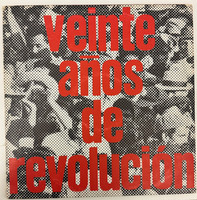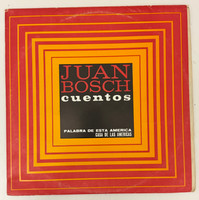- Travel
-
Exhibits
- La Portada Cubana
- Immortal Cuba: Artists Take on Their Heroes
- Seattle Poster Exhibit
- Sandra Dooley & Alejandrina Cué
- The Art of Wayacón
- Cuban Folk Art
- Cuba In Black And White
- 25 Years of Cuban Art Space
- Summer Folk Art Expo
- ¡SPRING AWAKENING FROM CUBA!
- Celebrating The Art Of Cuban Women
- Celebrating Paper, Affordable Art from Cuba
- Art of the Revolution
- Outsider Art
- Lost and Found
- En la lucha: Celebrating Cuban Women and Their Art
- Cuban Art Stash
- 100 Fires: 5 Cienfuegos Artists' Work on Paper
- Waya + Monte! Magic Realism in Cienfuegos
- Viva Cuba Viva! Poster Show
- Cultivando Sueños
- Black Lives Matter in Cuba Jan 9-March 27
- Leandro Soto: Crónicas visuales
- Cuban Canvas
-
Archive
- Global Reflection 2018: Spirit and Community
- Exhibit in the cloud: Contemporary Works on Paper
- MADE IN CUBA! MINNEAPOLIS EXHIBIT
- Cuban Posters and Photography from CCS collection
- AUTUMN SALE! Sept/Oct 2017
- SPRING ARTS AND CRAFT SALE
- Vuelo Directo/Non Stop: Alberto & Alejandro Lescay
- The Many Faces of Fidel
- Somos
- Made in Cuba!
- The US empire in Cuban graphics
- Made in Cuba/Seattle exhibit
- Entre Nos
- Looking Back
- Cuban Art Space
- Membership/Donate
- About Us
- Cuba News
-
Palabra de esta América was an important spoken word recording series produced by Casa de las Américas through their Centro de Investigaciones Literarias and Centro de Estudios del Caribe, with recordings produced by EGREM (Empresa de Grabaciones y Ediciones Musicales), Cuba's state-run record label. The series documented Latin American writers reading their own works, preserving the authentic voices of the continent's most significant literary figures.
This 1977 release, number 15 in the series, features Haroldo Conti (1925-1976), one of Argentina's most important writers and a victim of state terrorism. Born in Chacabuco, in Buenos Aires province, Conti was celebrated for his intentionally indecisive narrative tone and characters filled with imagination and humor despite adversity—from vagabonds to the tortured. His narrative style created what critics called "a little pile of true sadness," focusing on the great and small misfortunes of his compatriots. His major works included the novels Sudeste (1962), Todos los veranos(1964), Alrededor de la jaula (1966), Con otra gente (1967), En vida (1971), Mascaró el cazador americano (1975), and La balada del álamo Carolina (1975).
Tragically, Haroldo Conti was kidnapped by the Argentine military dictatorship on May 5, 1976, during the early months of the "Dirty War." He was disappeared and murdered—one of the estimated 30,000 victims of state terrorism during Argentina's military dictatorship (1976-1983). This recording, released in 1977, became a posthumous testament to Conti's voice and literary legacy, preserving his readings of his own short stories "El último" (complete on Side A, with the final portion on Side B) and "Perdido" (Side B). The biographical text's reference to characters "desde el vagabundo hasta el torturado" (from the vagabond to the tortured person) takes on heartbreaking significance given Conti's own fate.
The album cover uses the concentric square Op Art design characteristic of the series, here rendered in vibrant pink/magenta and deep green—colors that create a striking, almost jarring visual tension. This chromatic intensity seems particularly resonant given the political violence of the era and Conti's tragic disappearance.
-
-
Discover More at the Center for Cuban Studies







